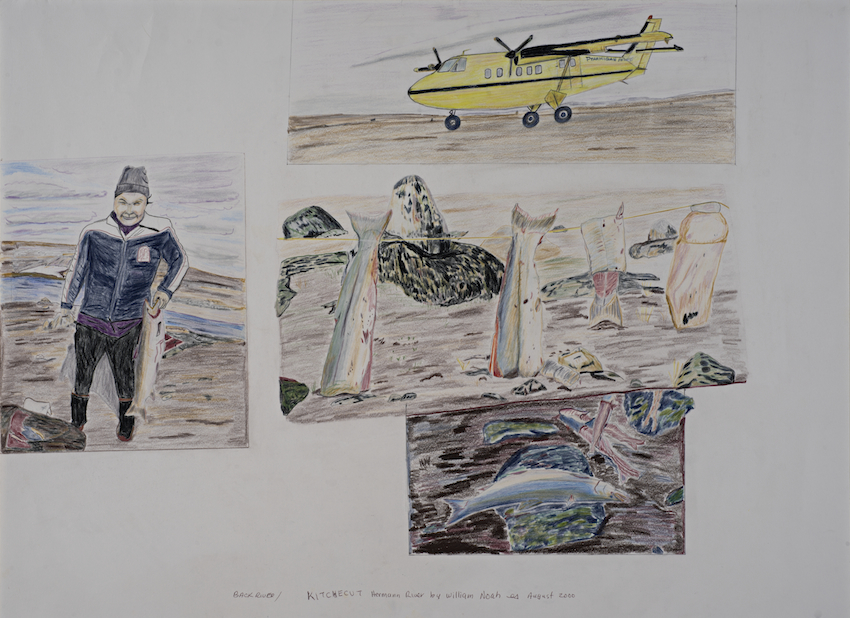
William Noah (Inuit, Baker Lake, Canada, b. 1943)
Kitchecut, 2000
Watercolor
20 x 26 inches
Reproduced with the permission of William Noah
“I love that place I left as an 11-year-old. I returned in 1994. It brings me back to my roots. I see family there that are no longer here.”
— William Noah
Noah renders contemporary Inuit experience through multiple perspectives of a twenty-first century char fishing expedition, suggesting Inuit mobility and continuation in the Canadian arctic. Challenging the ethnographic photographs of Edward Curtis, who intended to capture a “dying race” by chronicling a colonial expectation of Native American cultures, Noah disrupts this dominant and ubiquitous iconography by reinterpreting the medium and its use. He tells a story of Inuit adaptation and continuance exclusively from his Indigenous perspective, using a style reminiscent of photography and collage. Creating what looks like photographs laid out on a table, Noah pilots a narrative that delegitimizes Curtis’ sepia portraits and establishes an alternative filter between reality and representation. The scenes convey a sense of nostalgia for Noah’s childhood spent at the char spawning site of Herman River, while they stress the progressive inheritance of Inuit lifeways. Kitchecut was the name of the community that Noah and his family would return to every spring, convening with other Inuit to hunt and fish to stock up on food for the following winter. The seeming collection of snapshots invites the viewer to share Noah’s memory of a particular trip with his family. At the same time, Noah confronts stereotypes of stagnation in Native communities by his inclusion of an aircraft in the upper right scene. The plane embodies the ascent of Inuit lifeways despite governmental regulation that eliminated nomadic practices and encouraged colonial dependency. Noah’s representation aims to destabilize Western conceptions of Inuit contemporary reality by suggesting the repeated and foundational qualities of Inuit daily life.
Noah tends to focus his pieces on images that he is familiar with, such as Inuit people and arctic animals or shamanism. His subjects are often alone or in small groups, anchored on a blank page, as if surrounded by the white wash of snow. The absence of a visual context allows the details of Noah’s images to dictate the situations within the stories they tell. The lack of a unifying background here allows the viewer to focus on the individual images that compose his own memory of this event. It is also important to Noah that his art be recognizable to his family and fellow citizens of Baker Lake and often recounts his experiences with people in his immediate environment when producing his art. Noah imagines his paintings as he walks through the world, ready to convert his imagined scene onto the canvas when he returns to his studio.
Clara Cardillo ’15 & Nick Veazie ’13
